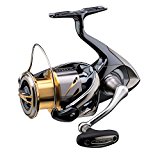Pink Salmon Habitat
The Pink Salmon is anadromous, which means that the Pink Salmon is an ocean going fish.
Anadromous Lifestyle
This might seem like a contradiction because they can be found in freshwater lakes their entire life.
However, in their native habitat, Pink Salmon migrate to the sea after birth and only return to freshwater once they are ready to spawn. As such, the Pink Salmon are both anadromous and nonanadromous.
Pink Salmon have a Short Life
Pink Salmon spend their first six months of their life in freshwater. Here they feed and grow sufficiently large enough to have a fighting chance at surviving in the ocean. However, their existence in the ocean is a very short one.
Pink Salmon only spend about 18 months in the ocean before they begin their migration back to their birth river. In fact, their time in freshwater and the ocean is so regular that odd numbered years never, or rarely, mate with even numbered years.
As most pink salmon die after spawning, only a few males manage to survive to spawn another year. Pink Salmon have the shortest life of all Pacific Salmon and they happen to be the smallest of the pink salmon as well.
Spawning in non Natal River
Pink Salmon have been known to spawn in rivers and streams that are not of their birth river. It is not known if they have a bad sense of direction or if they just don’t care if they pick another river. There could also be some genetic variation that is responsible.
Ideal Water Temperature
Pink Salmon are a cold water fish, unlike Masu Salmon, but like most other Pacific Salmon as can be seen by their distribution. Pink Salmon prefer the water to be from 48°F to 58°F/5.6°C to 14.6°C. It is believed that their preferred temperature is around the 50°F/10°C.
In comparison, fresh water bass prefer the water to be in the 60s. The upper end of the temperature range is 78°F/25.8°C. Sustained temperatures at this level or above will result in a drop in their numbers.
River Habitat
Like other Pacific Salomon, Pink Salmon prefer clear, clean fresh water that is cold. High levels of turbidity, sustained increases in the water temperature can rest in failed spawning years or eradication from a river or stream.


